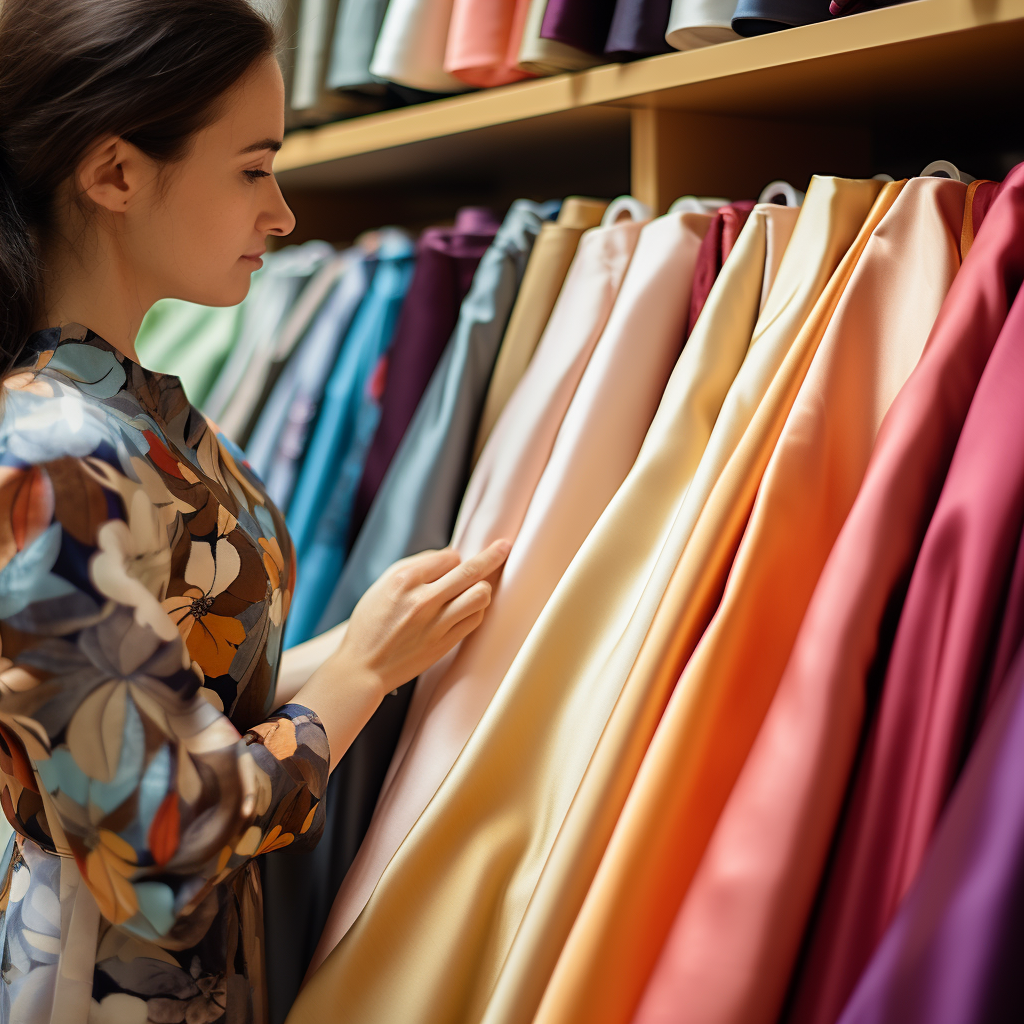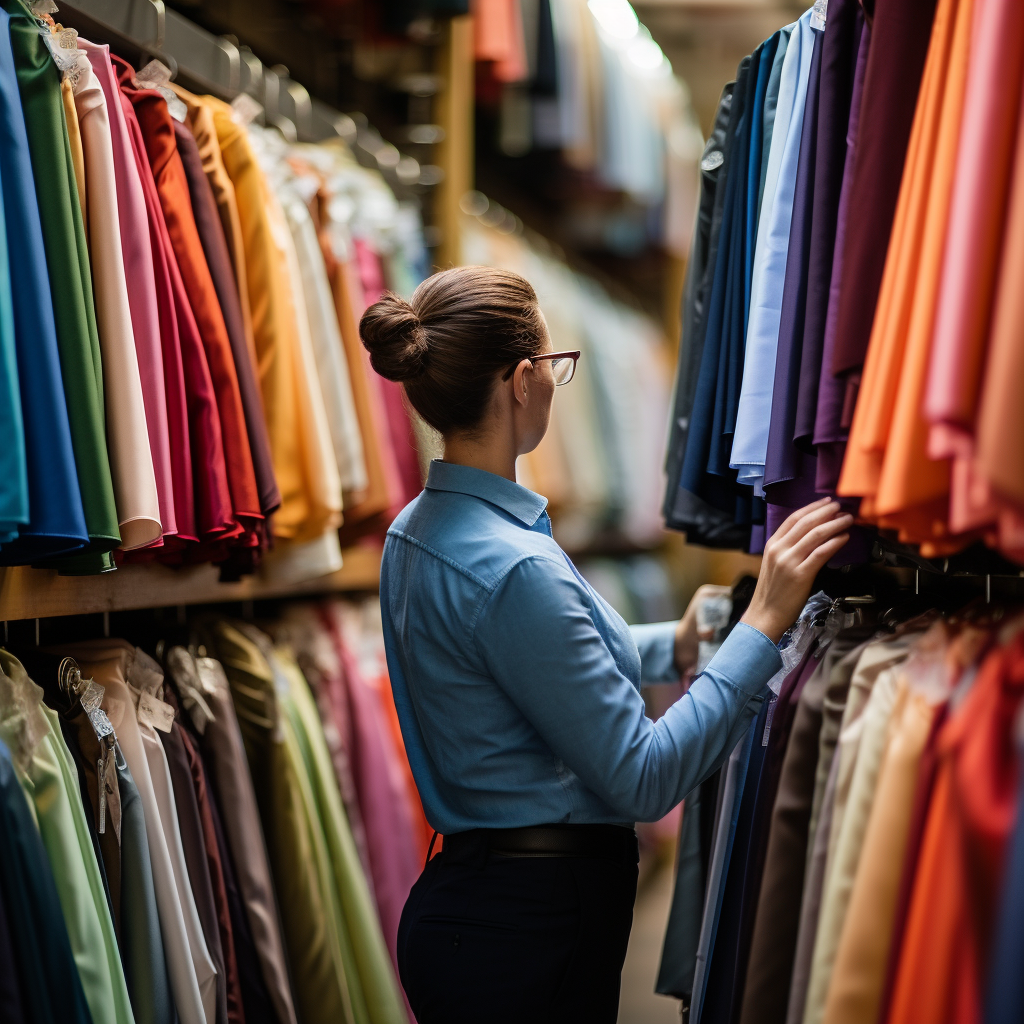In the world of fashion and apparel, the fabric is more than just a raw material. It is the soul of the garment, dictating its feel, look, and durability. For those entering the fashion industry, understanding the nuances of fabric can be the difference between a successful clothing brand and one that fades into obscurity. This comprehensive guide is designed to arm you with the knowledge you need to make informed fabric choices for your clothing brand. From understanding different types of fabric to sourcing materials and communicating your choices to manufacturers and customers, this guide covers it all.
Understanding Fabrics
1.1 The Basics
The journey into fabric understanding begins with the basics – what fabrics are and how they are made. Essentially, fabrics are materials made through weaving, knitting, spreading, crocheting, or bonding that may be used in the production of further goods, like clothing.
Fabrics can be grouped into three categories based on their origins:
- Natural Fabrics: Made from natural fibers obtained from nature. Examples include cotton, silk, wool, and linen.
- Synthetic Fabrics: Created using chemical processes, these fabrics are often designed to mimic the properties of natural fabrics. Polyester and nylon are common examples.
- Blended Fabrics: As the name suggests, these fabrics are a blend of natural and synthetic fibers, aiming to balance the strengths and weaknesses of their constituent materials.
1.2 Fabric Types and Characteristics
Different types of fabrics come with their own unique sets of characteristics. Some fabrics are lightweight and breathable, others are heavy and insulating, some have a shiny finish, others are more matte and casual. For example, silk is renowned for its luxurious feel and shiny finish, making it ideal for high-end fashion items. On the other hand, cotton is versatile, breathable, and comfortable, making it a staple in everyday wear.
It’s essential to understand these properties, as they will directly influence the comfort and functionality of the clothing you create.

1.3 Table: A Comparison of Fabric Types
| Fabric | Origin | Characteristics | Common Uses |
|---|---|---|---|
| Cotton | Natural | Breathable, Comfortable, Versatile | T-Shirts, Jeans |
| Silk | Natural | Luxurious, Shiny, Delicate | Dresses, Blouses |
| Wool | Natural | Warm, Durable, Wrinkle-resistant | Sweaters, Coats |
| Polyester | Synthetic | Strong, Durable, Wrinkle-resistant | Sportswear, Jackets |
Choosing the Right Fabric for Your Brand
2.1 Factors to Consider
Selecting the perfect fabric for your clothing line is a critical decision that requires careful thought and consideration. A number of factors come into play including:
- Cost: The fabric cost significantly impacts the final price of your product and, consequently, your target customer base.
- Durability: The fabric’s longevity and wear-and-tear resistance are key considerations. You want your customers to enjoy your products for a long time.
- Comfort: How comfortable the fabric feels when worn is essential, especially for clothing intended for extended use.
- Care Requirements: Some fabrics require special care, such as hand-washing or dry-cleaning. These factors can influence a buyer’s purchasing decision.
- Sustainability: Increasingly, consumers are favoring brands that prioritize sustainable and ethically-sourced materials.
2.2 Table: Matching Fabrics to Clothing Items
The following table offers a starting point for matching fabric types to specific clothing items.
| Clothing Item | Suggested Fabrics |
|---|---|
| T-Shirts | Cotton, Polyester-Cotton blends |
| Formal Shirts | Cotton, Linen, Silk |
| Jeans | Denim (cotton) |
| Dresses | Cotton, Silk, Linen, Synthetic blends |
| Activewear | Polyester, Spandex, Nylon |
Please note that the choice of fabric should align with your brand’s mission, target market, and aesthetic.

Sourcing Fabrics
3.1 Local vs. International Suppliers
When sourcing fabrics, deciding between local and international suppliers is a critical first step. Local suppliers can offer easier communication, lower shipping costs, and faster turnaround times. However, international suppliers, particularly those in countries with a strong textile industry, can provide a wider variety and potentially lower prices.
3.2 Sustainable Fabric Options
As sustainability becomes a more prominent concern for consumers, considering eco-friendly fabric options can be beneficial. These may include organic cotton, bamboo, hemp, and recycled materials.
Working with Manufacturers
4.1 Communicating Your Fabric Choices
Once you’ve chosen your fabric, communicating your needs effectively to manufacturers is essential. Provide them with clear specifications, such as fabric type, weight, and color. If possible, send physical fabric samples for the most accurate results.
4.2 Sampling and Quality Control
Before proceeding with a full production run, always request samples from your manufacturer. This allows you to check the quality of the fabric and the manufacturing process. It’s also a good opportunity to wash the sample to see how the fabric reacts and to ensure colorfastness.
Marketing Your Fabric Choices
5.1 How Fabric Choices Affect Brand Image
Your fabric choices are a significant part of your brand image. They speak volumes about your brand’s values, target audience, and price point. For example, a brand using organic cotton sends a message of environmental responsibility and caters to consumers who value sustainability.
5.2 Communicating Fabric Quality to Customers
Effective marketing should communicate the quality of your chosen fabrics to your customers. Include fabric information in your product descriptions, emphasizing its benefits. For instance, if you’re using a comfortable, breathable fabric like cotton, make sure your customers know about it.
Conclusion
Starting a clothing brand is a thrilling endeavor that comes with its unique set of challenges. One of the primary ones is understanding and choosing the right fabric. This decision will directly influence your brand’s success. Your fabric choice affects everything from manufacturing to marketing and, ultimately, customer satisfaction. By gaining a solid understanding of different fabric types, sourcing responsibly, communicating effectively with manufacturers, and marketing your fabric choices to customers, you can set your clothing brand up for success.

FAQs
- What are the primary fabric types for clothing?
- The primary types are natural fabrics like cotton, silk, and wool, synthetic fabrics like polyester and nylon, and blends of these.
- How do I choose the right fabric for my clothing line?
- Consider factors like cost, durability, comfort, care requirements, and sustainability. Match these factors with your brand’s mission and target market.
- Should I source fabrics locally or internationally?
- Both options have pros and cons. Local sourcing can offer better communication and quicker turnaround, while international sourcing might provide more variety and lower costs.
- What are sustainable fabric options?
- Sustainable options include organic cotton, bamboo, hemp, and recycled materials. These options are increasingly favored by eco-conscious consumers.
- How do I communicate my fabric choices to manufacturers?
- Provide clear specifications, such as fabric type, weight, and color. If possible, send physical samples for the most accurate results.
You may also like
-
Automatic Fruit Wine Bottling Line for Small Wineries: A Complete Guide
-
How Does Plywood HSN Code Decide the GST Rate for Traders and Manufacturers?
-
POS Terminal Type: Which Is Best for Your Business?
-
How to Choose Fixed and Portable Gas Monitors for Industrial Gas Detection?
-
Simplifying Trademark Registration in Hong Kong: What Businesses Need to Know

